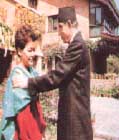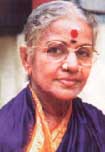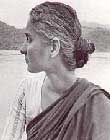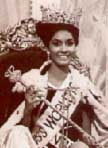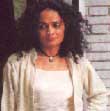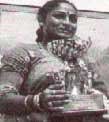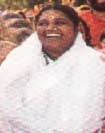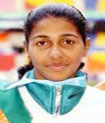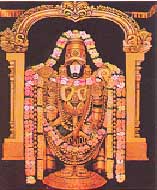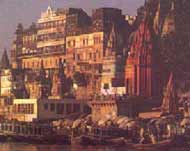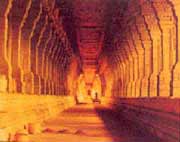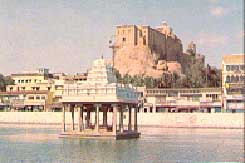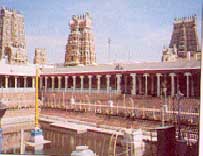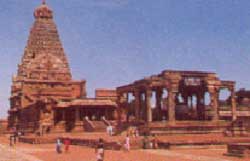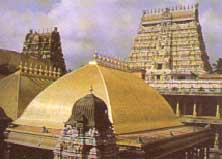India is known as one of the few countries in the world that has a heritage dating back centuries ago. Well it can be proved till date as the temples stand witness to the rich cultural heritage of our country.
Travel to the north of the country or the south there are temples and heritage sites that will take your breath away. Some are so profound with beauty that they are made tourist spots for people not only in the country but for tourists from abroad too.
Some famous temples to mention are the Khajuraho Temple, Badrinath, Pushkar, Tirupati, Kanyakumari, Srimahavirji, Kedarnath, Dwarkadeesh, Ajanta Cave Temples, Kalkaji, Birlamandir, Lotus temple and Meenakshi temple.
These however are the very famous ones. But if one loves to take a tour of temples then South India boasts of the best the country has. They are beautiful with architecture resounding from the tip that rises meters into the sky to its very edge that settles on the ground. Inside, outside there is drama in every window, door, steps and even in the bells that complete the temple.
Also the rituals are very simple and temples are less orthodox in the North as compared to the South, where the rituals are elaborate and very long. The stone deities are dressed in the best and taken for processions during the year. The richer the temple the more elaborate is the festivities. Also the temples in Kerala are starkly different from the temples in the other three states.
The temples are so large down south that they become mini complexes and serve as a place to feed people, wedding grounds, conduct festivals, hold kitchen wares and even religious schooling.
INDIAN CULTURE
Wednesday, December 29, 2010
Saturday, December 25, 2010
WOMEN OF FAME
Wednesday, December 22, 2010
HINDUISM
HINDUISM
Hindu WeddingsHindu weddings are full of color and much fanfare. On an auspicious day the members of the families of the bride and the groom gather in a mandapam usually in the vicinity of a temple. The bride remains out of sight while the groom parades the streets with a garland and a huge gathering. The ceremony takes place around the sacred fire where the groom ties the "Thalli", which consists of tying of three knots around the neck of the bride. Then the priest applies tilak on the foreheads of the bride and groom and the function comes to a halt after a sumptuous vegetarian meal. Places associated with HinduismVaranasi, Haridwar, Ayodhya, Mathura, Dwaraka, Kanchipuram, Ujjain are the sacred seven holy Hindu cities of India. Varanasi and Haridwar are the important sites on the holy river Ganges. Other cities are the birthplaces of Hindu Gods like, Rama in Ayodhya, Krishna in Mathura. Badrinath, Puri, Rameswaram and Dwaraka are traditionally called the four corners of the holy India. Hindu BooksThe RamayanaThe Ramayana is the most loved book of the Hindus.The story goes like this; Dashratha, ruled the kingdom of Kosala. King Janak ruled another kingdom Videha. At the touch of Janak's plough, a lovely daughter, Sita, appeared and she was married to Rama, the eldest son of Dashratha. Dashratha's second wife Kaikeyi compelled Dashratha to banish Rama from the kingdom for fourteen tears. Rama, his wife, Sita and his brother Lakshmana set out for the woods. Srupnakha fell in love with Rama, who resented her. On her instigation, her brother, Ravana snatched Sita. Rama raised an army, invaded Ravana's kingdom and rescued Sita after killing Ravana.Then they came back to Ayodhya, where Bharat another loyal brother, gladly surrendered the throne of kosala to Rama. The MahabharataThe Mahabharata is a grand epic and the greatest work that Asia has produced. Tradition attributes it to Vyasa. The story is; Yudhistra gambles away his wealth, his army, his kingdom, his brothers and even his wife Draupadi in a game in which his Kaurav enemies play with loaded dice. By agreement the Pandavas are to receive their kingdom back after a twelve-year banishment. The twelve years pass and the Kauravs don't keep their word and then the Pandavas declare war. Allies are brought on either side. All the Kauravs are slain. Bhagavad-GitaThe Bhagavad Gita or "Lord's song" is the grandest philosophical poem in world's literature. It is embedded in the narrative of the great battle. The scene of the poem is the battle between the Kauravas and the Pandavas. The occasion is the reluctance of the Pandava warrior, Arjuna, to attack his own near relatives in the opposing force. Thereupon Krishna explains that it is just to kill one's relatives in war; that it is Arjuna's duty to fight and kill with a good conscience and goodwill. He says that it is only the body that is slain, while the soul revives. The Bhagavad- Gita is revered next to the Vedas. Hindu Temples
|
Monday, December 20, 2010
INDIAN ASTROLOGY
INDIAN ASTROLOGY
Vedic Astrology
Indian Astrology is an ancient science based upon the knowledge gained by ancient Indian sages and saints on planetary influences. It had evolved long before the Western astronomers and astrologers were born. It has its roots steeped into the Vedas which date back to 1500 BC.
Jyotish - Jyothisha or Light
No other science can be more interesting, instructive and useful to mankind in contributing to the moral and material advancement that Indian astrology. Indian Astrology is based upon the foretelling the future of indivudals, nations or other events relying on the planetary movements. In Sanskrit, it is known as Jyotisha or Light.
Indian Astrology interprets what it conceives to the future of the man as moulded by his previous Karma or birth and indicates by the planetary positions at the time of his birth.
Branches in Indian Astrology
Astrology in india has three branches namely: Siddhanta, Samhita and Hora. Siddantas are those who devote to astronomical study of celestial bodies. Samhitas deal with mundane astrology, earth quakes, floods, volcanic eruptions, rainfall, weather conditions economic conditions,etc.Hora deals with predicting the suitable timing of various events in our day-to day life.
Nadi
Apart from these schools of Astrology in india, we have what we can call as Nadi Astrology (or) Nadi Shastra which gives pictures of life and destiny patterns of people born at 12,24,48 seconds intervals. These have been written on palm leaves by our ancient sages. Only very few experts can read and understand these, but the results and predictions are found to be amazingly accurate.
Nakshatras
The Indian Astrology study consists of 27 Nakshatras. The movements of the two luminaries Sun and Moon, the five major planets of Mars, Jupiter, Saturn, Venus and Mercury and the two nodal points of the Moon i.e., Rahu and Ketu are considered. The outer planets like Pluto, Neptune and Uranus that have been discovered lately are not recognised by the Indian Astrology.
Moon and Rasi / Rashi
Moon is given much importance in Indian astrology as it is the nearest to the Earth and it exercises much influences on us. The waxing and the waning of the Moon causes the tides of the seas and plants and animals as also man is also affected to greater extent. The Moon’s position in one’s birth chart is called the Rasi or Moon sign and this along with the Nakshatra or the star constellation of the individual is used for predictions.
Indian astrology techniques are vastly used in India and the world over for predicting the birth, nature of Marriage, career, finances, diseases, death of people. It is also used in Mundane analysis for predicting the future of countries, natural catastrophes.
Indian astrology uses a different zodiac than Western astrology and is a branch of Vedic science. In India, there is widespread belief in astrology and it is commonly used.
It generated interest with research oriented astrologers in the West from the early 1990s. Unlike astrology in the west, Vedic astrology deals with more natural matters and is not used to find lucky numbers for a lottery or to win a casino game. Siddhanta, Samhita and Hora are the basis of Vedic astrology and together they predict natural events such as earthquakes, rainfall, economic conditions and the suitable timing of various events in our day-to day life.
More recently, Indian scientists have denounced a proposal to use state money to fund research into Vedic astrology as it is a part of India's heritage and a science that we are continuously learning from.
It generated interest with research oriented astrologers in the West from the early 1990s. Unlike astrology in the west, Vedic astrology deals with more natural matters and is not used to find lucky numbers for a lottery or to win a casino game. Siddhanta, Samhita and Hora are the basis of Vedic astrology and together they predict natural events such as earthquakes, rainfall, economic conditions and the suitable timing of various events in our day-to day life.
More recently, Indian scientists have denounced a proposal to use state money to fund research into Vedic astrology as it is a part of India's heritage and a science that we are continuously learning from.
Sunday, December 19, 2010
Story of Ravana & Aathma Lingam
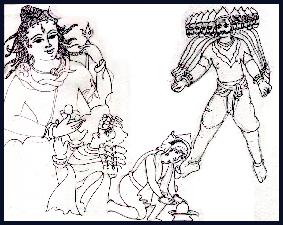 Ravana, the king of Lanka was an asura, but he was an ardent devotee of Lord Siva. He reached mount Kailas & prayed to Lord Siva, that his Lanka should never be destroyed. Lord Siva gave him an Aathma Lingam, with the condition that he should go back on foot to Lanka & that he should not put down the Lingam at any point. If he were to put the Lingam down, the Lingam would remain firmly at that spot.
Ravana, the king of Lanka was an asura, but he was an ardent devotee of Lord Siva. He reached mount Kailas & prayed to Lord Siva, that his Lanka should never be destroyed. Lord Siva gave him an Aathma Lingam, with the condition that he should go back on foot to Lanka & that he should not put down the Lingam at any point. If he were to put the Lingam down, the Lingam would remain firmly at that spot.The Devas were worried that the Aathma Lingam would add to the might of Ravana & that he could never be destroyed if he succeeded in taking the Aathma Lingam to Lanka.
Click on image to view enlarged version
They prayed to Lord Ganesha for help. Lord Ganesha caused Ravana's stomach to be filled with water. Ravana grew desperate to answer nature's call. Ganesha appeared before Ravana as a small boy. Ravana handed over the Aathma Lingam to the boy. Ganesha declared that he could not wait for long & when he grew tired, he would call out Ravana's name thrice & if he did not come & take the Lingam, he would place it on the ground & go away. Ravana agreed.
Soon Ganesha called out Ravana's name thrice, and since Ravana could not come and take the Lingam, he placed it on the ground. The enraged Ravana tried to remove the Lingam from the ground. But, in spite of using his twenty hands, he could not budge the Lingam. Though the Lingam could not be moved, the pressure from Ravana's hands had changed its shape like the ear of a cow & hence the place came to be called Kokarnam (Ko-cow, karnam-ear). The lingam came to be called Mahabaleswarar since it could not even be shifted by the mighty Ravana (maha-great, balam-power, Eswarar-Lord Siva).
Ravana started chasing the boy to hit him on his head. Lord Ganesha showed his true form & blessed him. The Ganesha statue in the temple has a hollow on the head, where Ravana is supposed to have strcuk him (Kuttu - to hit with folded fists). Lord Ganesha can be pleased by doing kuttu (gently tapping both temples with folded fists).
Saturday, December 18, 2010
"Unity in diversity"
"Unity in diversity". It is not just another phrase or quotation. But, these words are highly prudent to a country like India that is incredibly rich in culture and heritage. Few quotations or statements cannot describe the pedestal that India holds in the world map because of its colorful and unique culture.
From the times of Mauryas, Cholas, Mughals till to the period of British Empire, India has always been famous for its traditions and hospitality. The warmth in the relations and euphoria in celebrations make the country stands out distinctively in the clutter. The country's liveliness and generosity attract a number of tourists. The cuisines, festivals, music, literature, and theatre..everything is 'special' in this 'land of gods'
From the times of Mauryas, Cholas, Mughals till to the period of British Empire, India has always been famous for its traditions and hospitality. The warmth in the relations and euphoria in celebrations make the country stands out distinctively in the clutter. The country's liveliness and generosity attract a number of tourists. The cuisines, festivals, music, literature, and theatre..everything is 'special' in this 'land of gods'
Traditional yet Contemporary
The Indian culture has never been rigid and that's why it's surviving with pride in the modern era. It timely imbibes the qualities of various other cultures and comes out as a contemporary and acceptable tradition. That is what unique about the Indian culture..it moves on with the time. There are certain things about India that are famous worldwide, like:
Subscribe to:
Posts (Atom)


